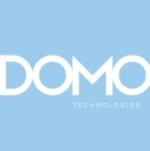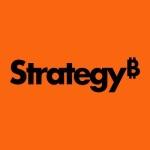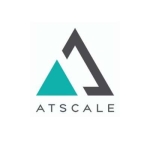What is most valuable?
The most important feature of BusinessObjects is its integration with the SAP ERP system. If an organization is using SAP as its ERP system, and they want to do business intelligence, reporting, or analysis, SAP BusinessObjects is the only tool that I see doing that quite efficiently. That's because of the fact it is tightly integrated, and it gives a good user experience in terms of faster reporting. Its integration is the feature that I have found most valuable, but there are also other factors.
SAP BusinessObjects is one of the oldest business intelligence tools. SAP has been in the market for quite a long time, and it is truly an enterprise company. They make sure that they talk to every component of the enterprise.
They are evolving quickly. They are quite innovative. They understand a user's viewpoint. The best part is their enterprise presence. They're already market leaders in ERP, and they already have a large user base. Having a business intelligence suite and an established product makes things easier for them.
What needs improvement?
I really want SAP to focus on the dashboarding side. Based on what I have seen in the past 10 years, dashboarding has captured a lot of markets. Executives at the top-level want data that is summarized, looks good, and tells you a story. That's where Tableau, Qlik, and Power BI have an upper edge. It doesn't mean SAP doesn't give you dashboarding. They do have a dashboarding solution, but Tableau, Qlik, and Power BI are more intuitive and more attractive. I would like SAP to capture the dashboarding market as well, wherein they give at least some competition to other competitors. Presently, Tableau, Qlik, and Power BI are leading the market.
I have seen other organizations such as Need4Viz that are creating beautiful charts. They are a partner of SAP. SAP needs to onboard companies that are developing open-source charts. They need to improve their user experience in terms of dashboarding.
Another thing that I would like SAP to improve is its licensing. Because of their licensing model, they are losing the market.
For how long have I used the solution?
It has been more than 10 years. I am an SAP BusinessObjects consultant. I've been working with the SAP BusinessObjects Business Intelligence Suite. I have worked on the ETL side, reporting side, and infrastructure side.
What do I think about the stability of the solution?
It is absolutely trustworthy. Once you develop a BI solution and it is signed off, you can definitely rely on it. I have seen big enterprises that have the finance or other critical reports going out from the system. It is reliable. I don't see any problem there. The problem only comes if it is not properly deployed, or you do not understand the product or don't know what you want from the product. Your business goals should be clear. Reliability is not an issue. It is an enterprise product at the end of the day.
What do I think about the scalability of the solution?
SP Business Objects is a Scalable Product and allows you to Scale your application Vertically & Horizontally both ,We can Scale up either by adding resources on a Single machine or add a Separate machine to increase the Performance.
Scaling up the Application is quite simple & can ensure performance & Reliability.
I have seen thousand of reports running on the platform without a performance overhead.
How are customer service and support?
Initially, it was not that good, but SAP took the feedback from their customers, consultants, partners, and Gold/Platinum partners, and then they improved that process and the user experience. They set up a community, and there was a lot of engagement at SAP's level. At one point, SAP involved their experienced engineers to write blogs to have a community engagement, which eventually improved the experience when it comes to their support. SAP understands customers. They have their strategies in place.
At this point in time, there is still scope for improvement, but their support is not bad. I would rate them at least seven out of 10.
Which solution did I use previously and why did I switch?
I do work for enterprise customers, and in the past 10 years, I have seen more presence of SAP, Tableau, and Qlik, but now Power BI has also started capturing the market. Power BI is cheap. Its per-user license fee is cheaper than SAP. That is the key reason why people are switching from SAP to Power BI, but at the end of the day, when customers who have been using SAP for ages do the PoC on Power BI, they are not getting the ROI that they're expecting. They already have a solution that is proven, working, and giving them what they are looking for.
All the tools have certain technical challenges in terms of the whole landscape or whole ecosystem, and our clients use tools as per their requirements.
Its integration with the SAP ERP system is a pro. Another pro is that SAP is already in the enterprise market. They understand the landscape of big companies, and that's how they actually enhanced their product. They also have a very good user community. However, SAP's dashboard capability needs to be further improved. It is improving, but Tableau, Power BI, and Qlik have already captured a big share of the market, and regaining that share of the market would be quite difficult.
How was the initial setup?
SAP's deployment is not straightforward. As compared to how it used to be 10 years ago, it is not that difficult. That's because SAP has worked on things that were lacking when it comes to deployment. They also worked on the other factors such as how good the support is, how good the product is, and how much help is provided on the internet. They have a user community of experienced people. They have worked on these factors, and now, it is much easier than it used to be about 10 years ago.
Its deployment cannot be compared with Tableau, Qlik, or Power BI because these are light tools. SAP has many more components than these solutions. SAP has more functionality, which makes the deployment a little bit tricky. When you have thousands of reports, it becomes more difficult. That's why its deployment needs more expertise than other tools. It is an enterprise solution, and at the end of the day, you need to scale it. When you have hundreds or thousands of reports, you need to scale your environment. When you have a large user base, you can come across issues, but it has improved over the period of time.
What's my experience with pricing, setup cost, and licensing?
SAP is losing market to its competitors because of its costly user license and licensing model. They can do much better on the licensing side. That's what Microsoft has been doing, and that's why Power BI is gaining market share at the moment.
SAP needs to relax a little bit on the licensing part. If Microsoft is giving people a solution that is half of the cost of SAP, people will definitely go with Power BI.
What other advice do I have?
They're evolving very quickly. They are giving users new features. They are taking feedback from the users, and they are making sure that they are not losing the trends. They understand the user needs and where the industry is moving in terms of cloud, artificial intelligence, and other emerging technologies that are going to be the driving force in the future. It is really amazing how SAP is doing it. I have been working with their tools for the last 10 years, and I've seen that they are coming up with almost everything that users need.
Now that everything is moving to the cloud, they are also working on the cloud side of their business. For example, SAP BusinessObjects is not good with dashboarding. It is basically for financial reporting and drill-down reporting. So, they came up with a cloud product that is not only for reporting but also for dashboarding. They have given a one-stop solution wherein you can do your reporting, dashboarding, and storytelling.
If you are completely new to business intelligence but you are already using SAP solutions, this is the best tool that you can use to leverage your financial systems or logistic systems. It is not a self-BI type of tool. It needs an IT expert. If your data is important and you are a big company or a mid-scale company, you should go with SAP BusinessObjects because it is already in the market, and it has integration with SAP ERP. The user experience will be good. You'll not see any performance issues with the queries. At the end of the day, when a business user sees a report, he doesn't understand which tool it is, whether it is SAP, Power BI, or something else. They want the experience to be good. They want the functionalities.
The advice for a new company is to first find out the integration. If you're using Power BI with SQL Server, it will work wonders, but if you are using it with SAP HANA or SAP BW, you'll not get the experience that SAP can give you. You need to understand the landscape and different applications that are there and then decide whether it would work for your use case. SAP doesn't fit everywhere. Similarly, Power BI doesn't fit everywhere.
An organization that is completely new to BI should try to identify:
- What type of reports do they want? Do they want aggregated reports or operational reports?
- Who is the target audience?
There are a lot of processes that are involved depending on whether the data is coming from your data warehouse, or you're querying the OLAP system directly.
I read a very good article where a company did this exercise and asked enterprises about the BI tools they use. What they ended up seeing was that no organization was using one BI tool. There were two, three, or even four BI tools. So, it all depends on your source systems. It is always a combination, and there can't be only one BI tool. It is difficult to have a single, centralized BI tool.
I would rate this solution a nine out of 10.
Disclosure: My company does not have a business relationship with this vendor other than being a customer.



















